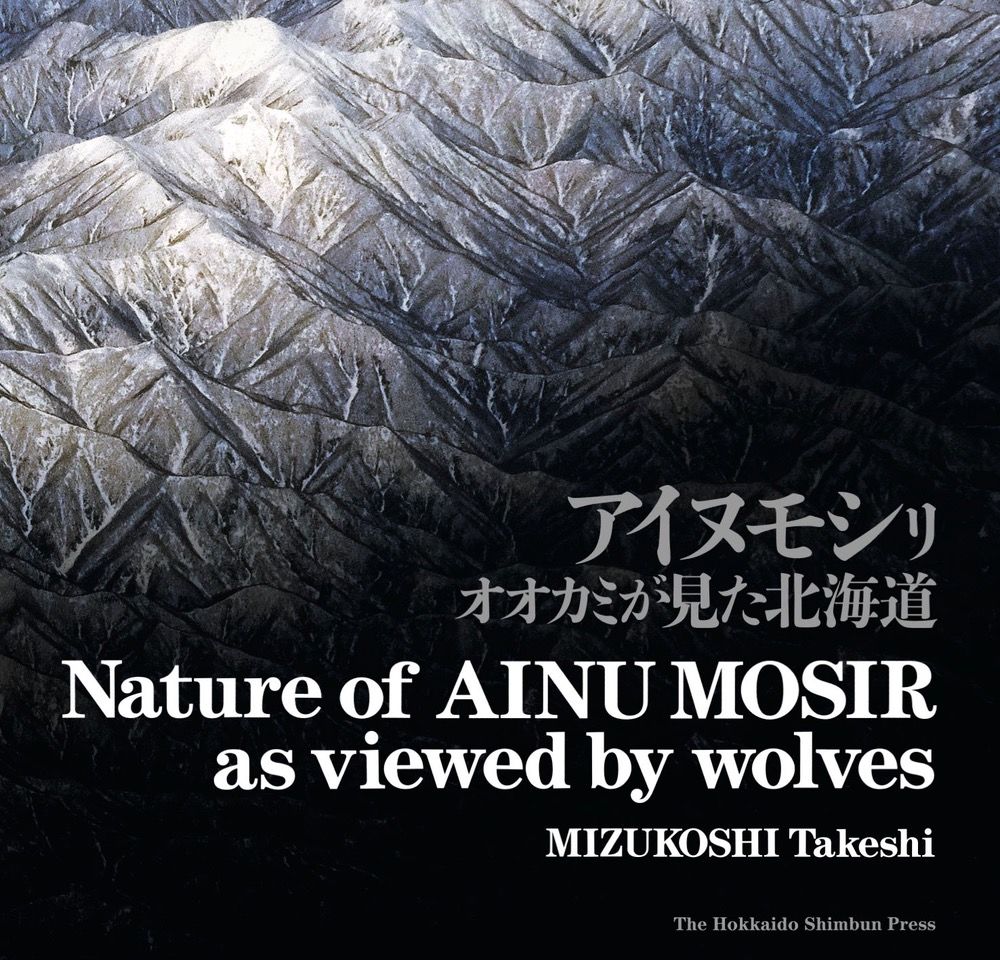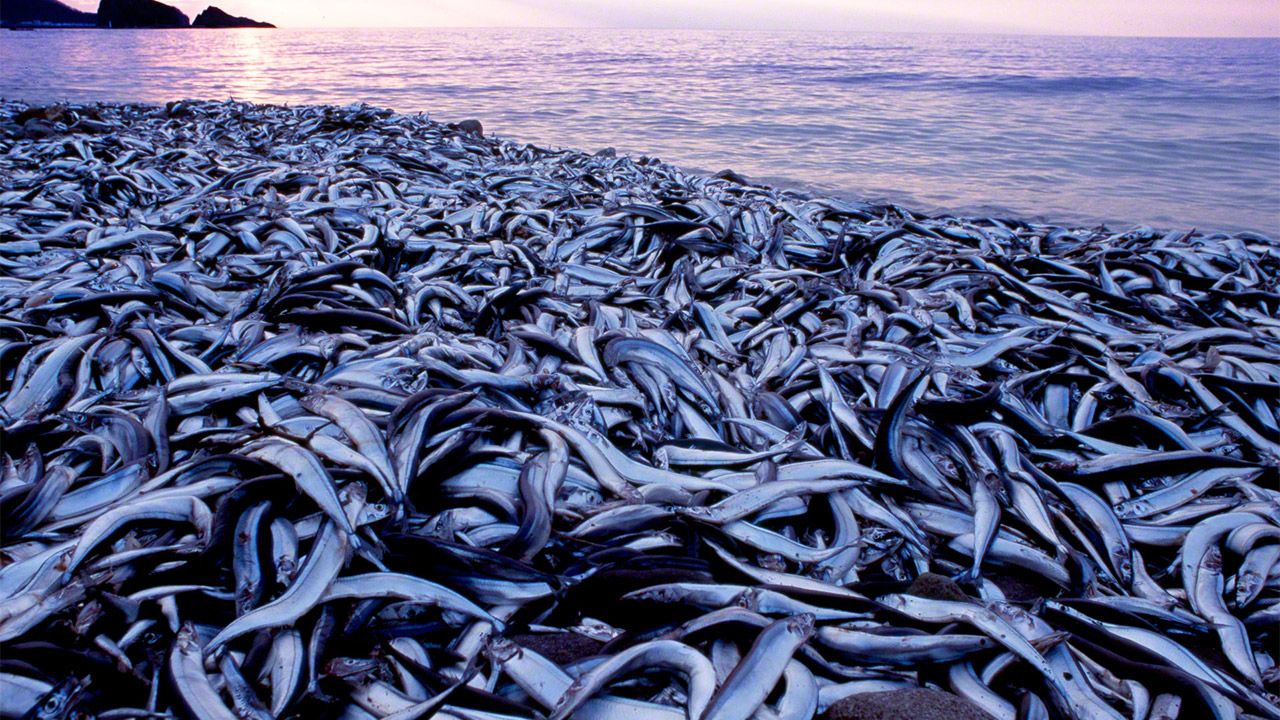
The Sea, Source of Nature’s Bounty
Environment Art Guide to Japan Travel- English
- 日本語
- 简体字
- 繁體字
- Français
- Español
- العربية
- Русский
The shoreline of Hokkaidō, Japan’s northernmost main island, was among the last in the world to be fully mapped. The first person to show Hokkaidō on a map of the world was Jerome de Angelis (1567–1623), an Italian Jesuit missionary to Japan, in 1621. On the map it was depicted more than three times larger than Japan’s largest main island of Honshū and identified as “Yezo.”
The Tsugaru Strait separates Honshū and Hokkaidō. Parts of Hokkaidō are only about 20 kilometers away from Honshu’s Shimokita and Tsugaru peninsulas, but access was hampered by frequent fog in summer and rough seas in winter due to seasonal northwest winds from the Asian continent. For this reason, it was only in the mid-nineteenth century that the outline of Hokkaidō became known, after six expeditions to the island by the explorer and cartographer Matsuura Takeshirō (1818–1888).
The Drift Ice of Winter
Hokkaidō is surrounded by three bodies of water—the Sea of Japan, the Sea of Okhotsk, and the Pacific Ocean—each with markedly different characteristics.
The Tsushima Current flowing northward in the Sea of Japan influences winter seasonal winds and brings heavy snowfall to the country’s western coast and to inland mountainous regions. The Sea of Okhotsk to the northeast becomes a vast expanse of white when drift ice moves in from winter into spring. In the Pacific Ocean, the cold Oyashio Current, turned black by massive amounts of plankton, flows southward, attracting huge schools of fish such as salmon, Pacific saury, and pilchards.
Of the three, I believe that the Sea of Okhotsk is the most typical of Hokkaidō. I live about 30 kilometers inland from it on the shores of Lake Kussharo, and ordinarily, I barely register the presence of the sea. But once a year, when the drift ice comes in to shore, the air temperature drops markedly. Kussharo, a deep caldera lake, does not freeze readily, but ice starts to form on the water around that time, transforming the surface into a sheet of white.

Drift ice pushed up against the shore by the wind in the Sea of Okhotsk. (© Mizukoshi Takeshi)
Due to global heating in recent years, pack ice no longer covers the entirety of the Sea of Okhotsk as it did in the past. There is much less ice now, and drift ice is beaching for shorter periods every year. I have lived in Hokkaidō for 35 years; previously, it was not unusual for winter temperatures to dip as far as minus 30º Celsius, but that happens less often nowadays and winters are easier to bear. On the other hand, it saddens me to realize that the island’s harsh nature is disappearing.
Blessings from the Amur River
It is unusual for drift ice to occur as far south as it does in the Sea of Okhotsk, at 43 degrees north of the equator, the same latitude as the northern Mediterranean and Boston in the United States. The mechanism through which the ice forms is gradually becoming clearer, thanks to scientific studies, satellite photographs, and international joint research by scientists from several countries, including Russia.
Be it in either the northern or the southern hemisphere, the Sea of Okhotsk is unusual in that it is the lowest latitude seeing the formation of drift ice. This phenomenon is most likely due to the Sea of Okhotsk’s topography and the Amur River, which flows through Siberia in the Russian Far East. Huge volumes of river water pouring into the Sea of Okhotsk from the Amur create the core of the drift ice. Taste a bit of drift ice and you will realize that it is made of fresh water, not salty seawater. On the way back from a visit to Lake Baikal one spring, I went to Khabarovsk and from there to near the mouth of the Amur. The river is so wide that I could barely see the opposite shore, and I was awed by the sheer volume of the water flow, augmented at that time of year by snowmelt.
Starting in November, freshwater flowing from the Amur begins to freeze over the surface of the Sea of Okhotsk’s much saltier seawater. As the temperature drops with the onset of winter, the frozen-over area slowly expands. The drift ice, carried by winds blowing from the northwest, generally reaches Hokkaidō’s Sea of Okhotsk shoreline by late January.
The silvery sea, frozen in ice and snow, is silent, bright, and still. But in early morning and late afternoon, creatures that have traveled on the drift ice frolic in the icy landscape.
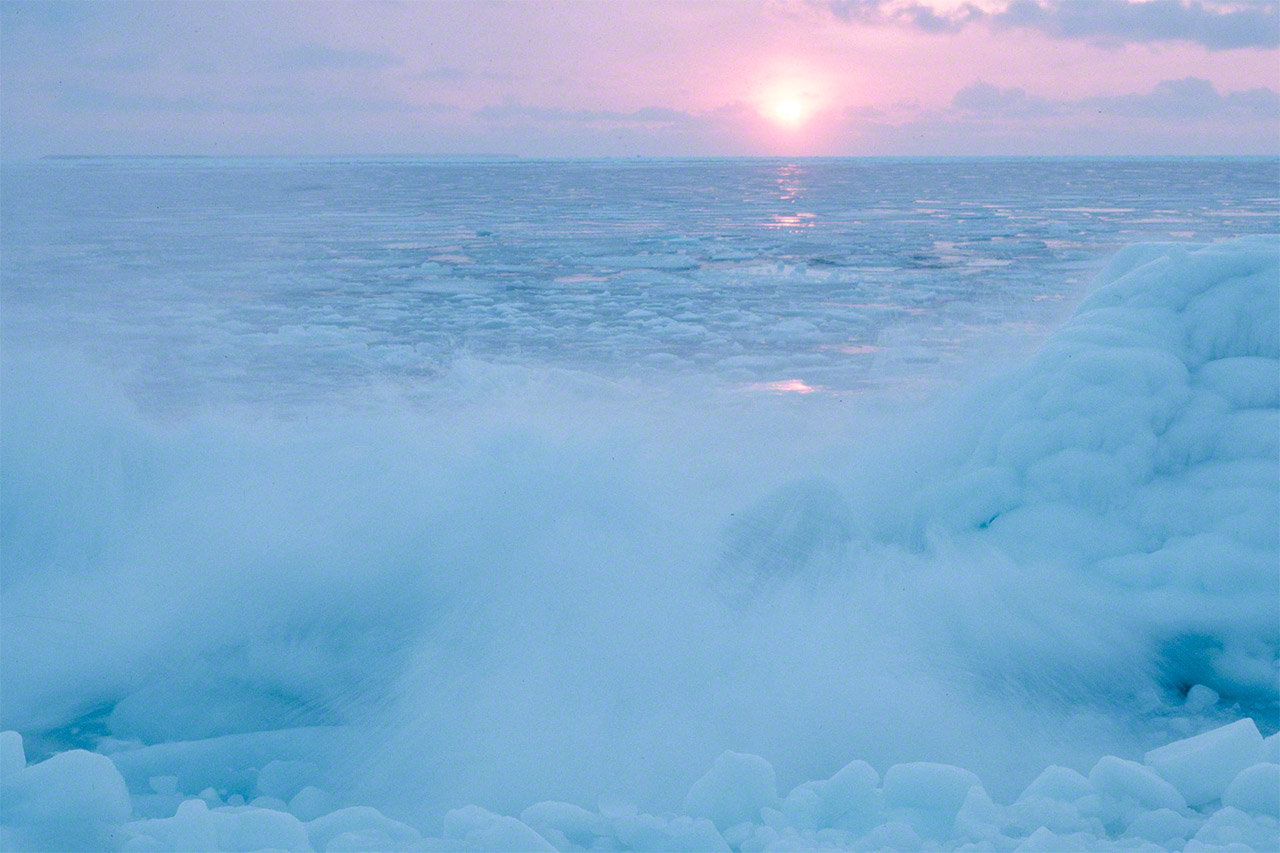
The sun rising above drift ice that has moved around the Nemuro Peninsula to head south in the Pacific Ocean. (© Mizukoshi Takeshi)
Diversity Abounds
The Sea of Okhotsk is well known as the winter haven of Steller’s sea eagles, white-tailed eagles, and other birds of prey, but earless seals and their relatives also make an appearance.
A few fur seals can be seen, as well as spotted seals, which give birth atop drift ice; ribbon seals are also plentiful. Spotted seals tend to stay near the shore, while ribbon seals are more often found in open water, probably due to differences in their food sources.
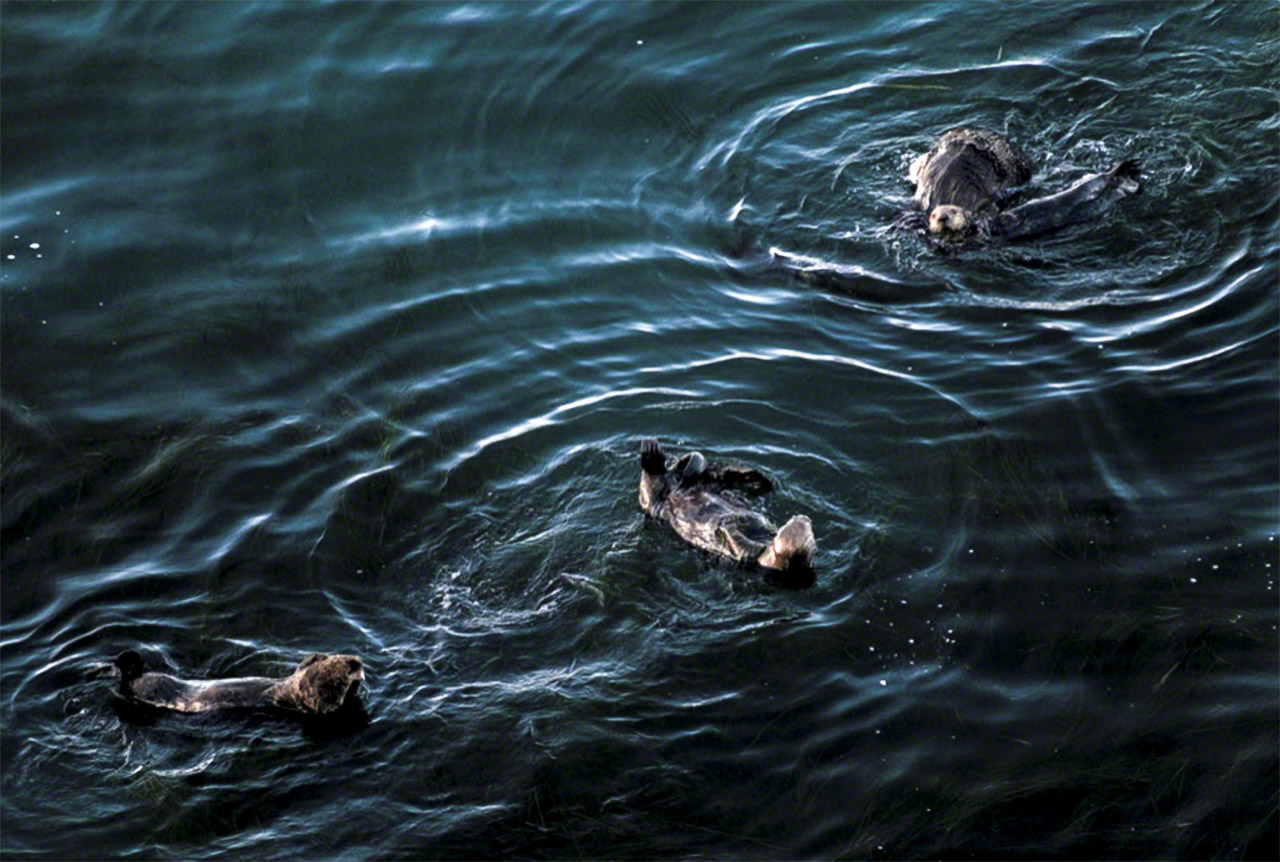
Sea otters have become frequent visitors to Hokkaidō shores in recent years at Cape Kiritappu. (© Mizukoshi Takeshi)
These and other wildlife, including endangered species, are supported by the sea’s bounty thanks to phytoplankton brought in by the drift ice. This provides food for zooplankton and small fish, attracting Alaska pollock, squid, and other marine life. This chain makes the Sea of Okhotsk one of the world’s richest marine ecosystems.
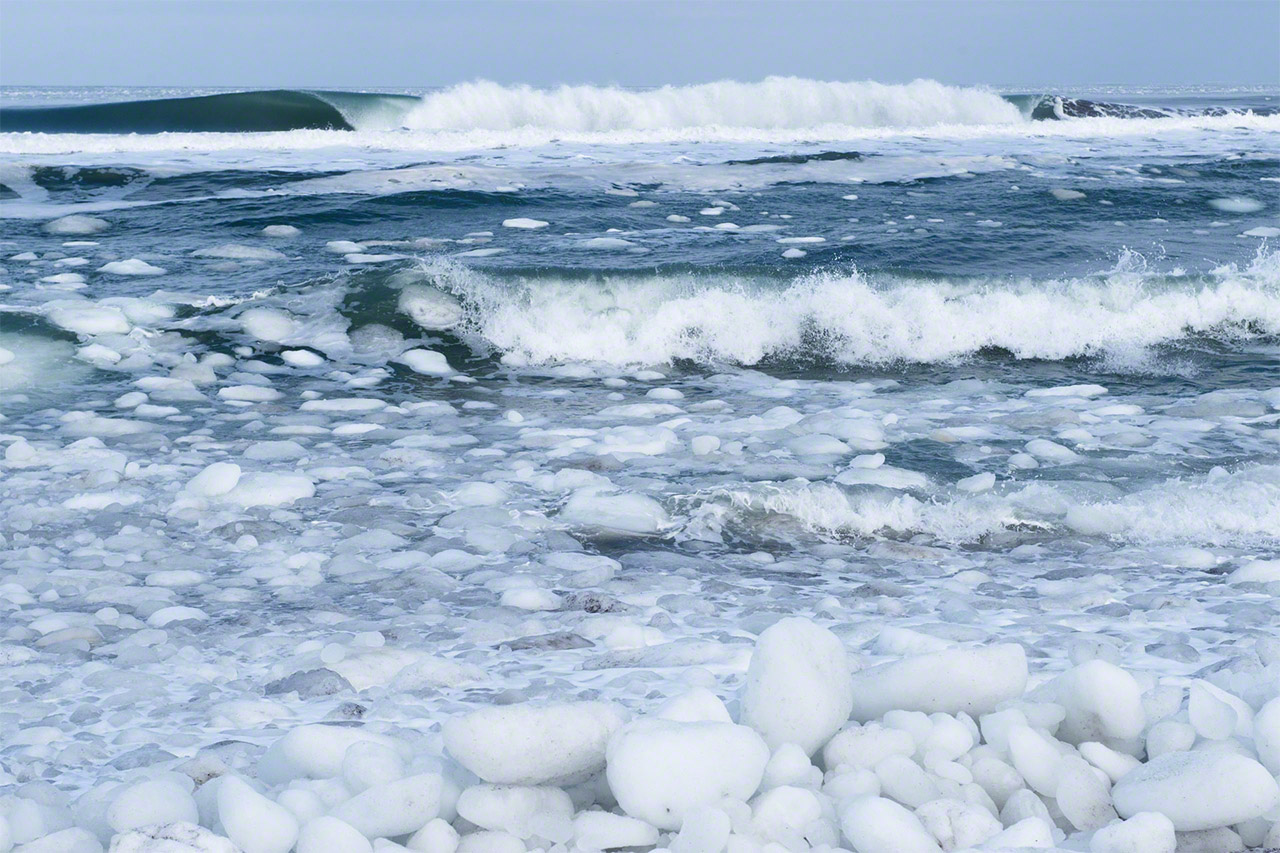
Wave-battered drift ice before it reaches the shore. (© Mizukoshi Takeshi)
The Sea of Okhotsk shoreline has few cliffs and reefs, except for the Shiretoko Peninsula, where the mountainous terrain slopes into the sea. Many of its beaches are sandy, and numerous sandbanks and sandbars have trapped seawater and created brackish water coastal lagoons such as Lake Kutcharo, Lake Saroma, Lake Notoro, and Lake Fūren. In spring and fall, countless geese and ducks stop over at these wetlands on their seasonal migrations.
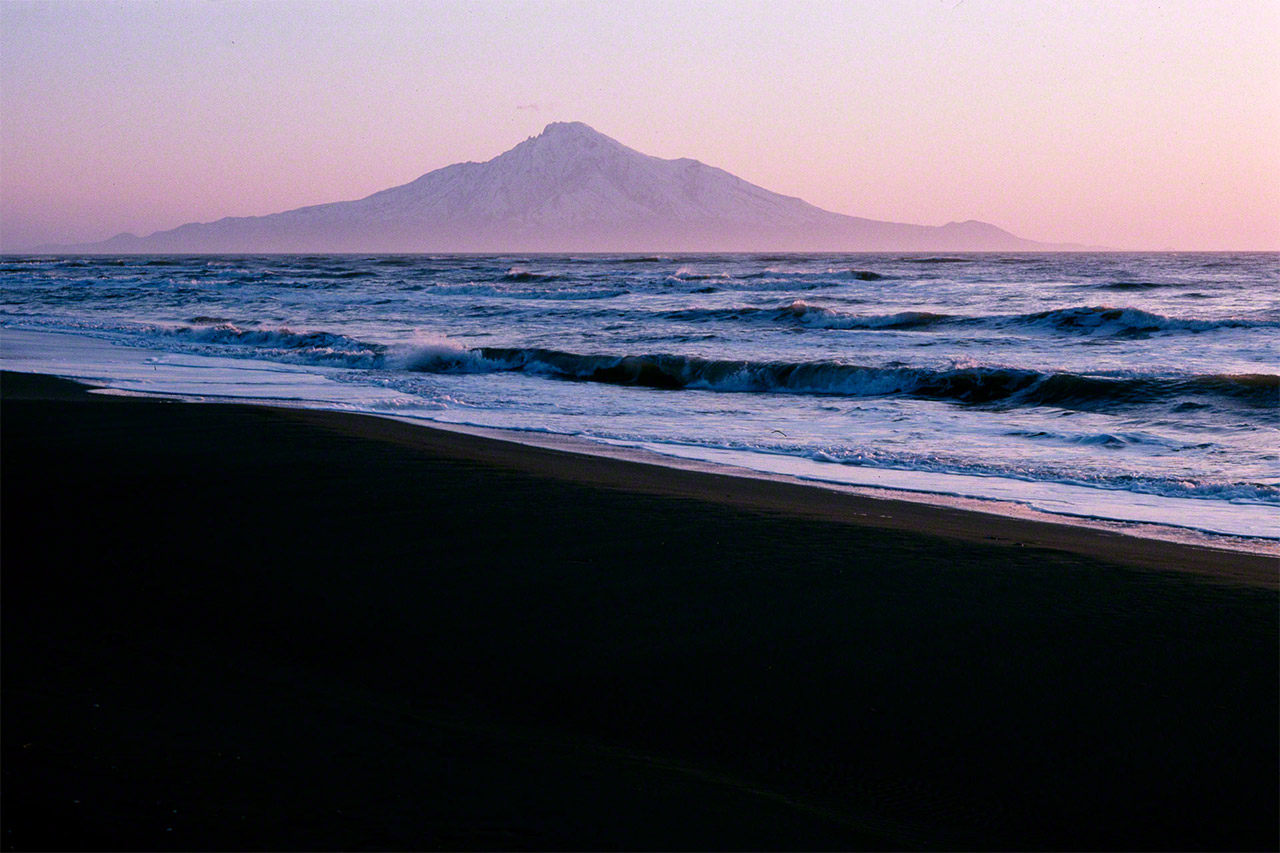
Mount Rishiri on Rishiri Island, viewed across the sea from the Sea of Japan shore of Sarobetsu Marsh. (© Mizukoshi Takeshi)
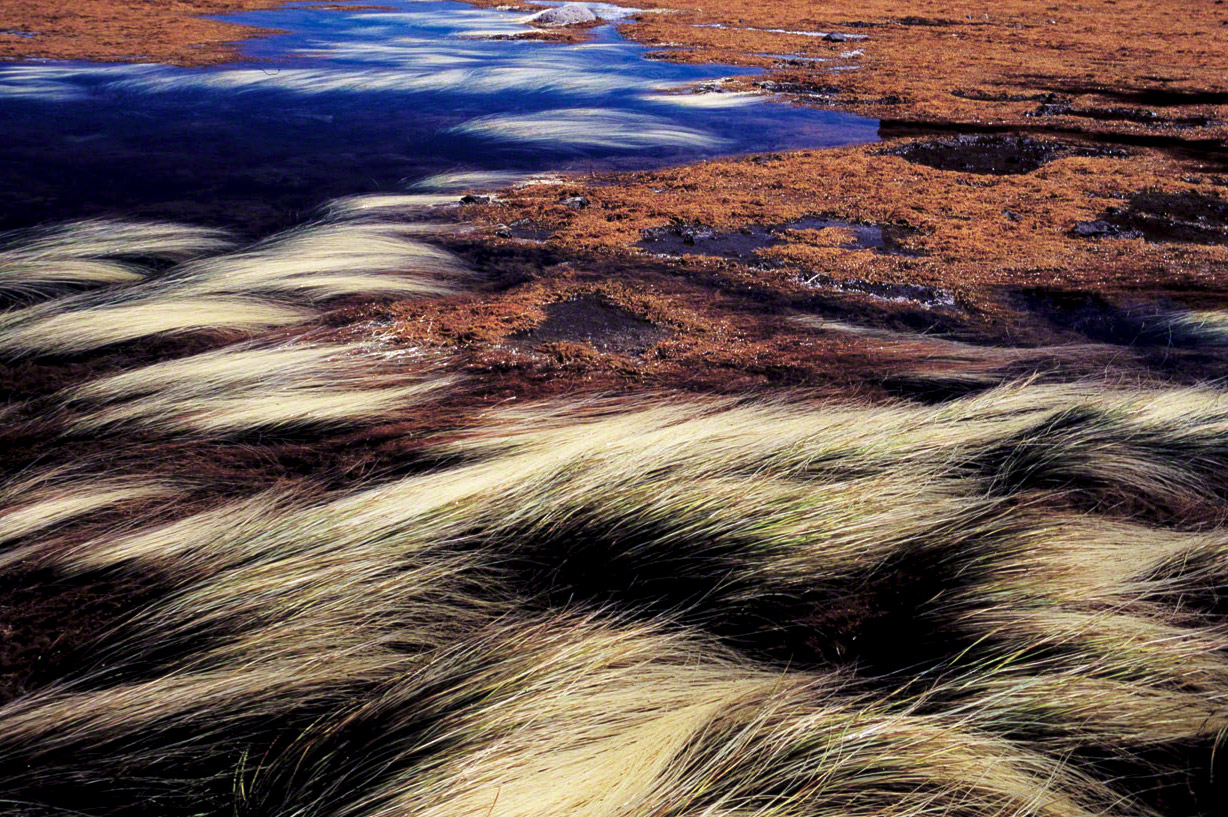
Seagrass bleached by the sun creates a symphony of color with seaweed on the Shiretoko Peninsula. (© Mizukoshi Takeshi)
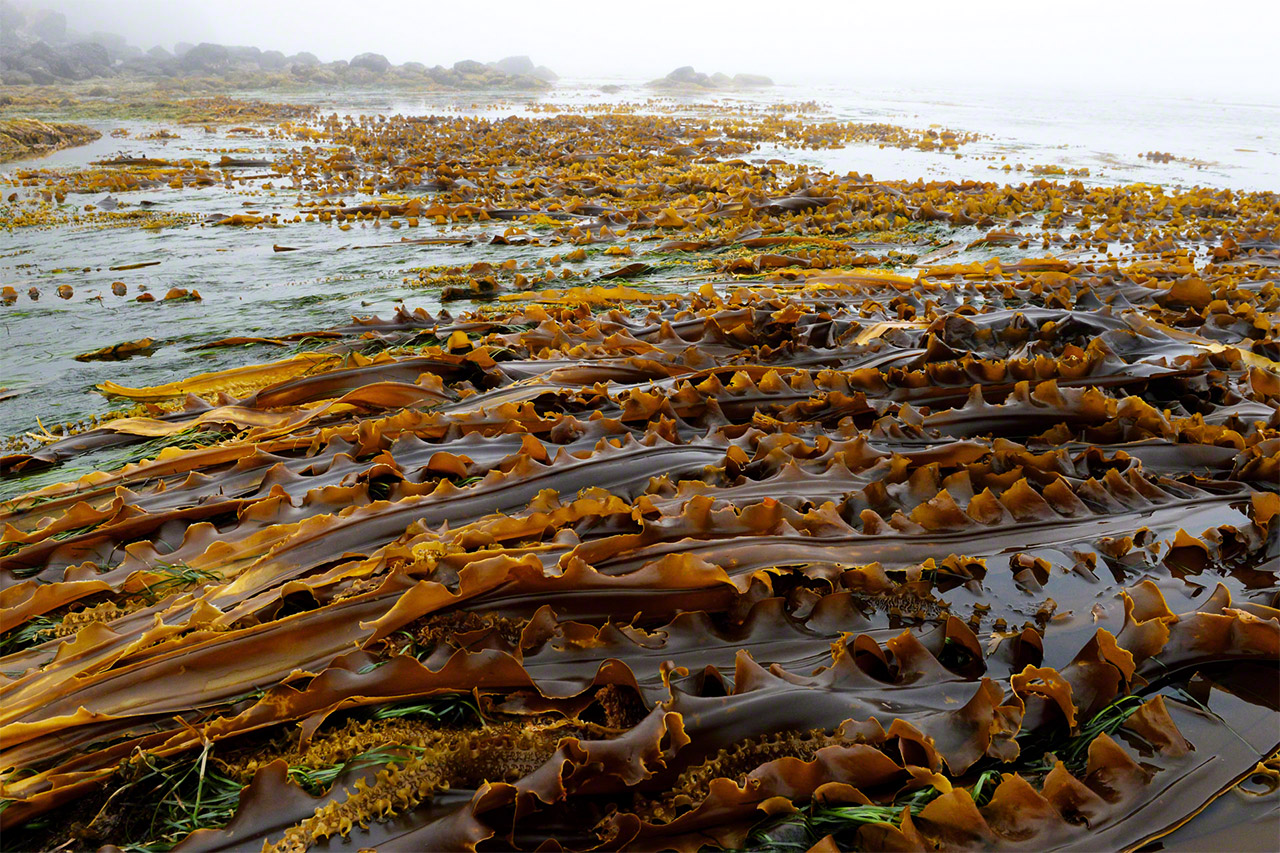
Wild konbu over 3 meters long is visible at low tide. (© Mizukoshi Takeshi)
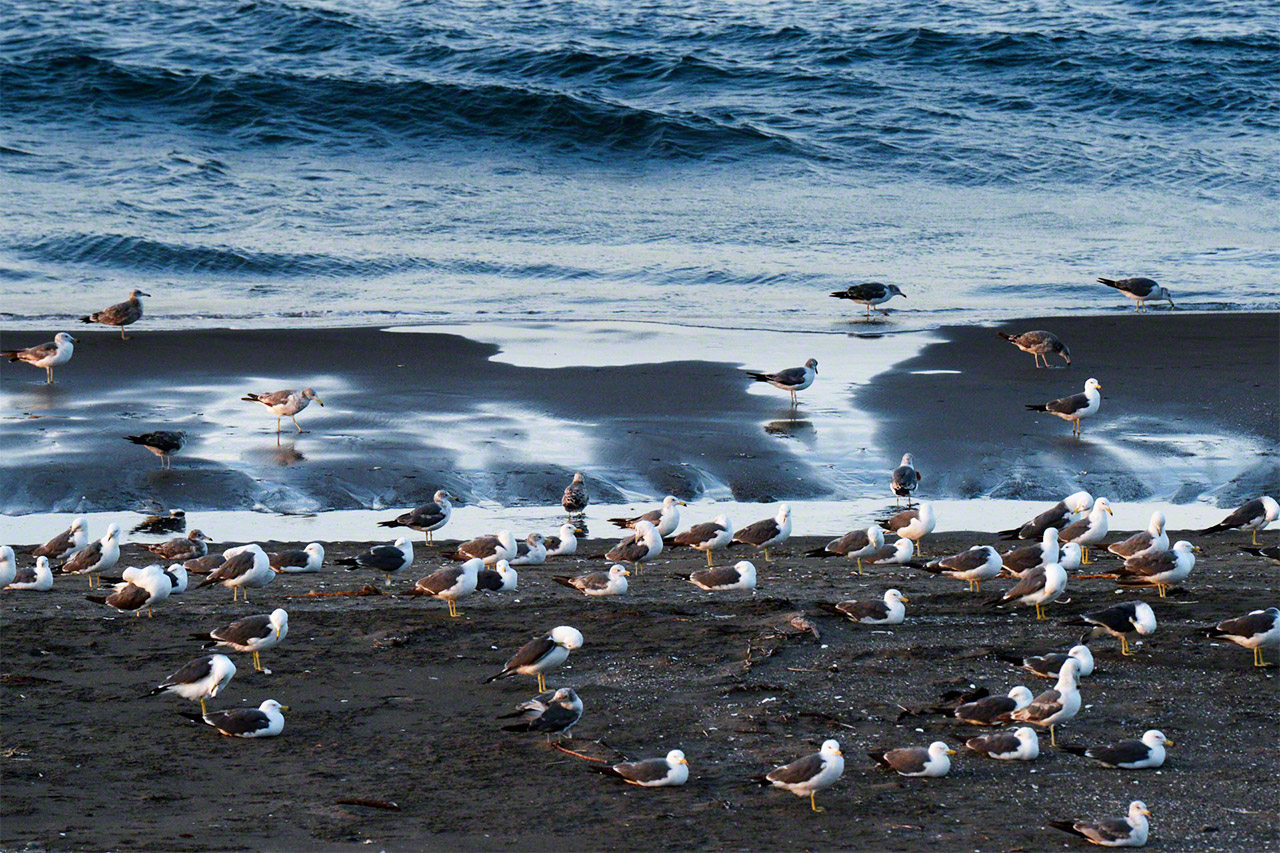
Seagulls congregate at the Sea of Okhotsk shoreline. (© Mizukoshi Takeshi)
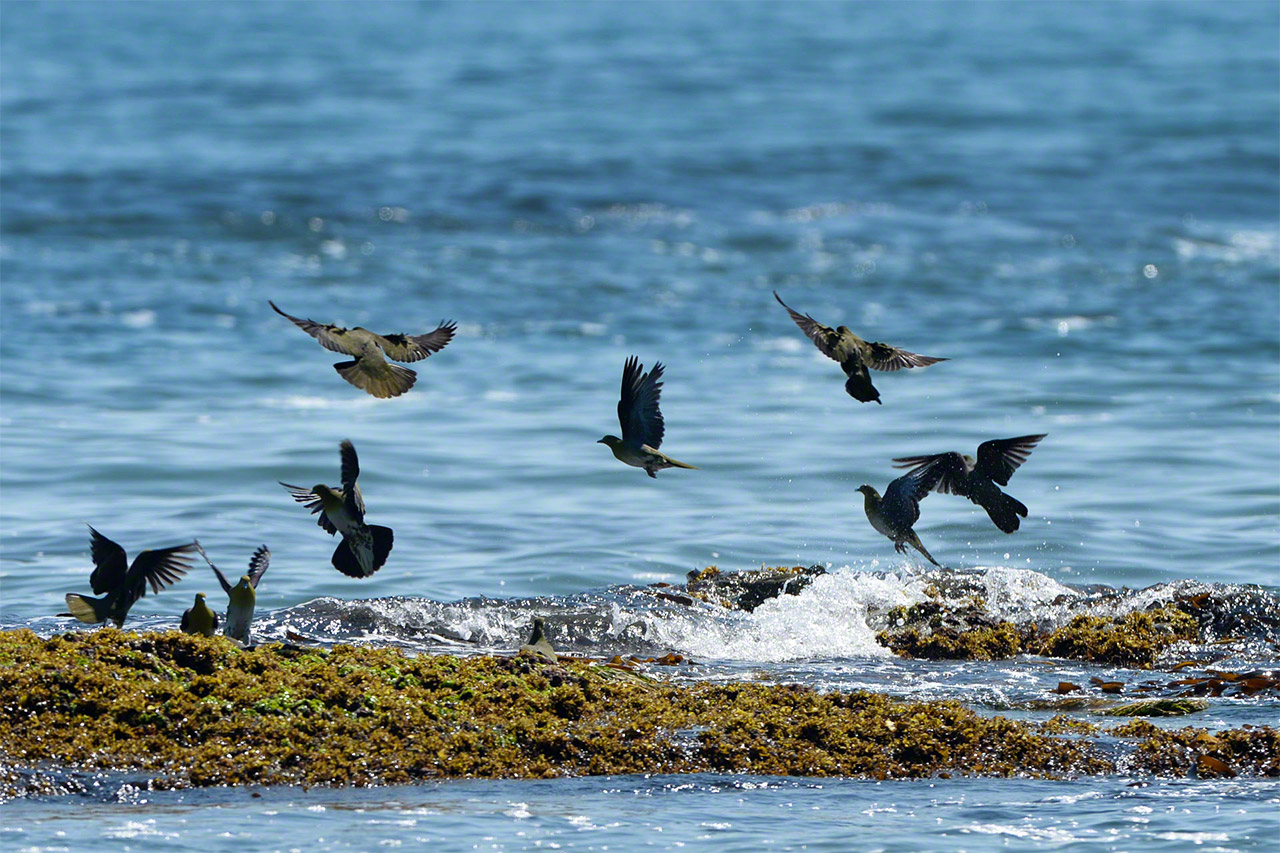
Aobato white-bellied green pigeons have the unusual habit of drinking seawater. The birds migrate to Hokkaidō to raise their young in forests on the shores of the Pacific Ocean. (© Mizukoshi Takeshi)
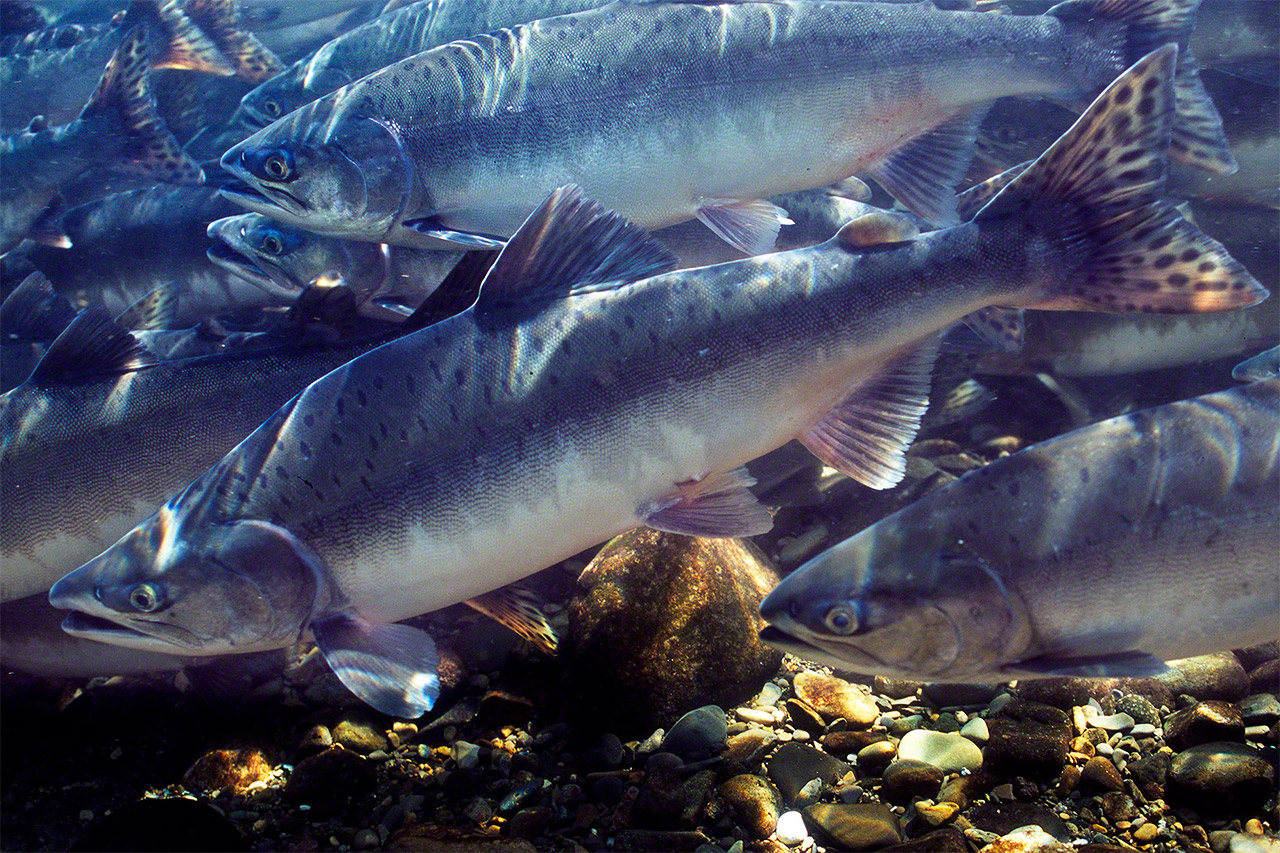
Salmon move in from the Sea of Okhotsk, swimming upstream to spawn in the rivers of Shiretoko. (© Mizukoshi Takeshi)
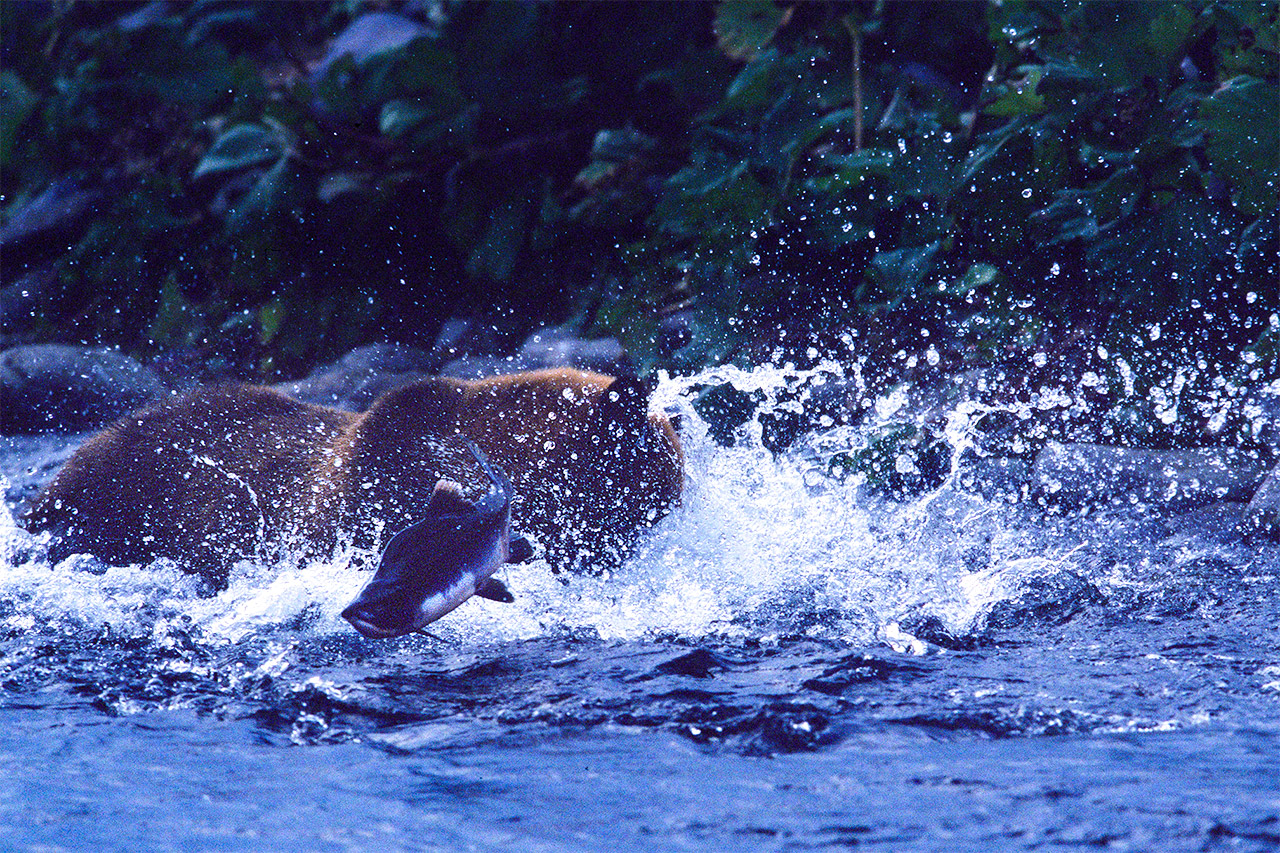
A pink salmon tries to escape the jaws of a brown bear. (© Mizukoshi Takeshi)
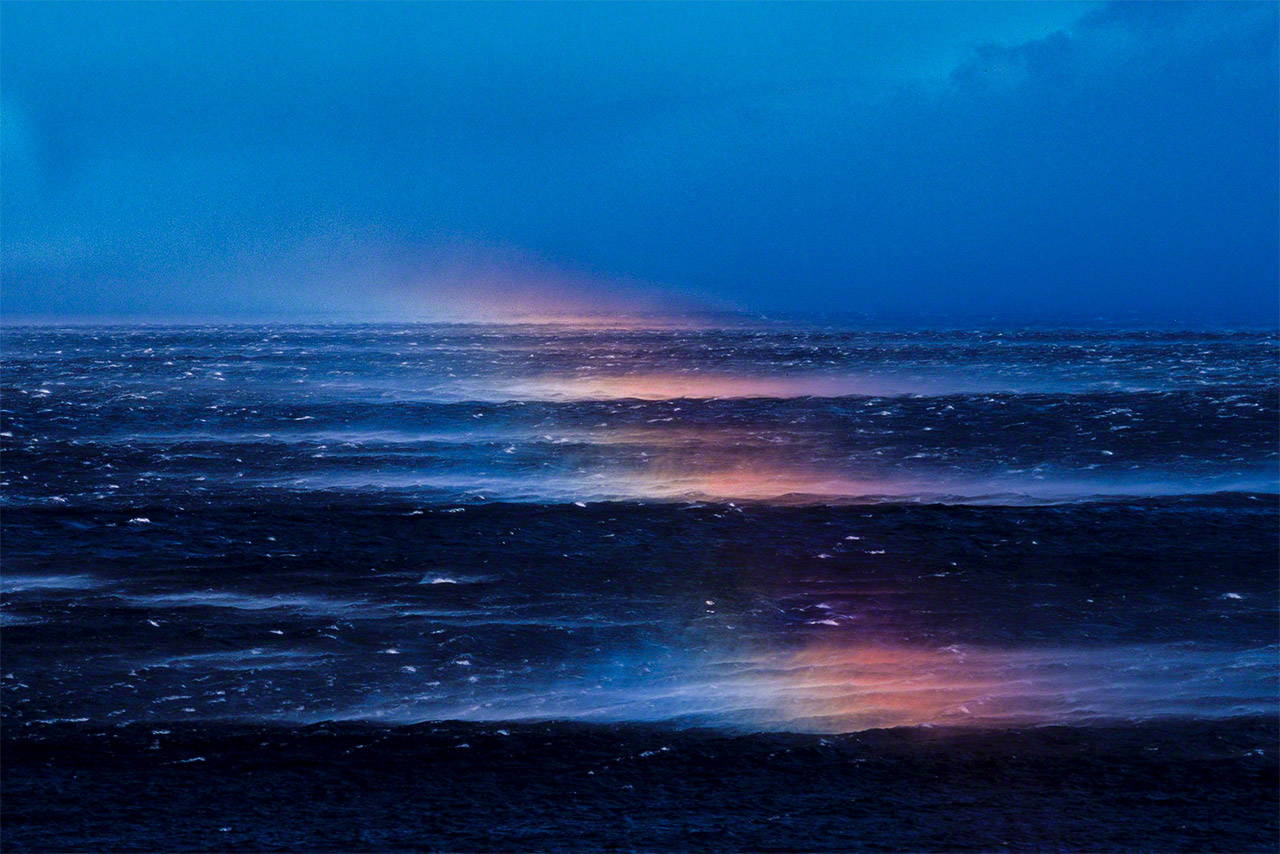
Sea spray stirred up by strong winds creates a rainbow on the Sea of Okhotsk. (© Mizukoshi Takeshi)
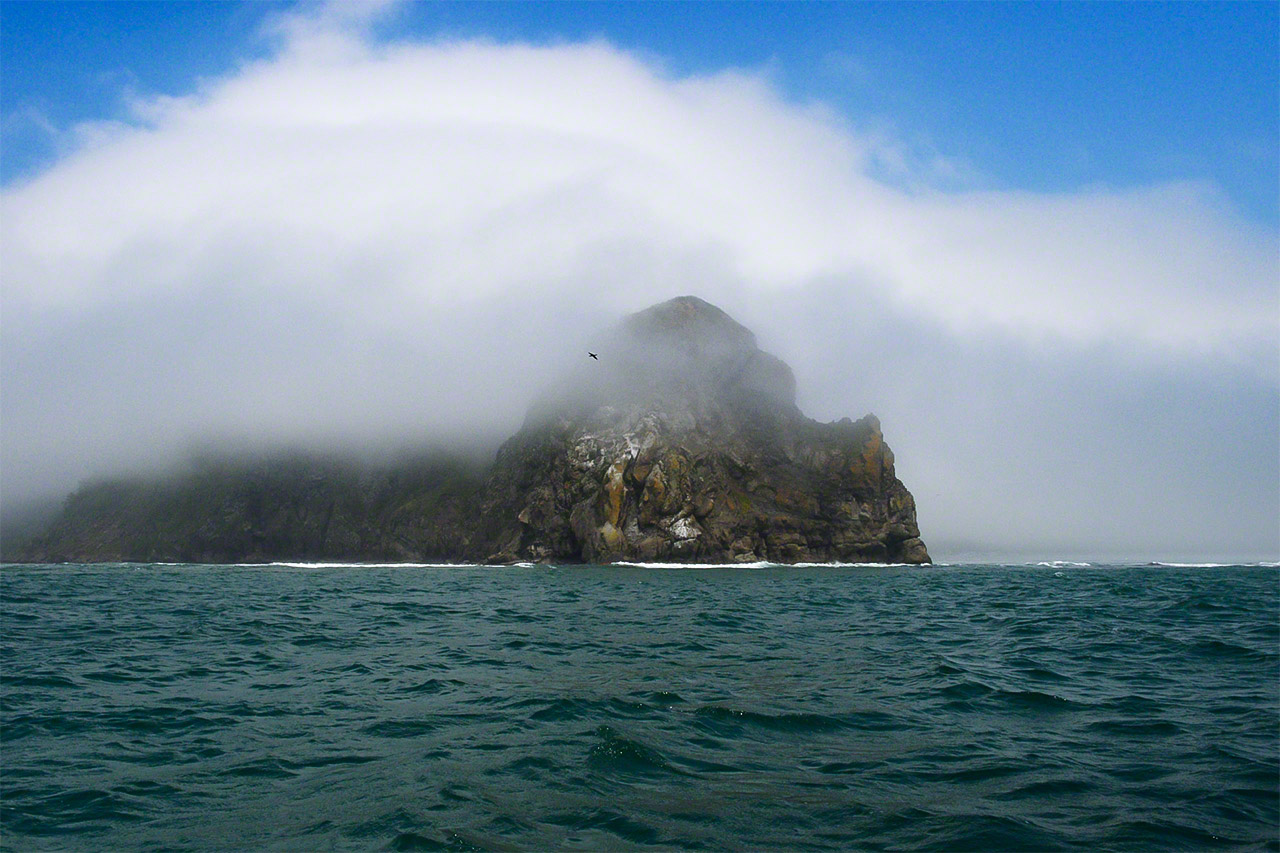
The eastern shores of Hokkaidō are often wreathed in sea fog created by cold winds blowing over the cold Oyashio Current. (© Mizukoshi Takeshi)
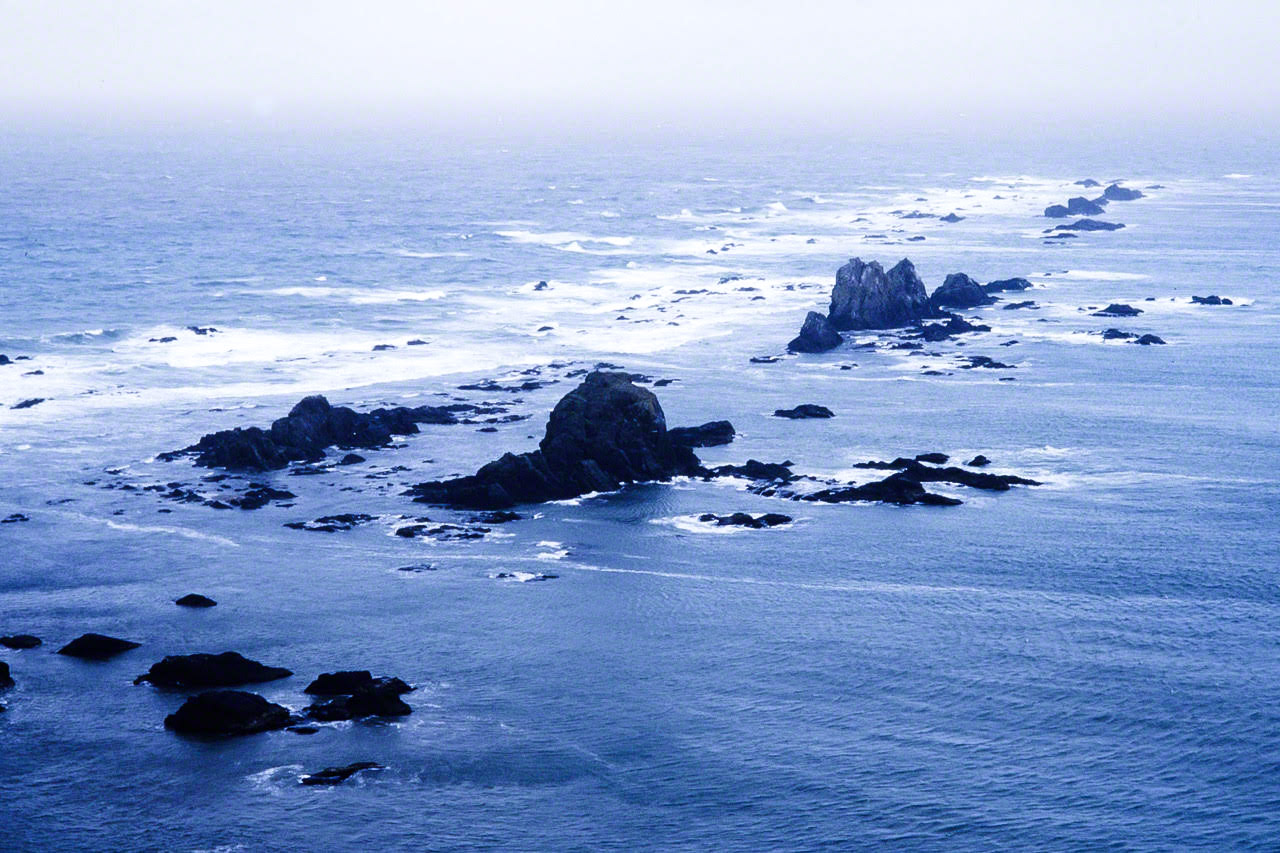
Cape Erimo, where the Hidaka Mountains run into the Pacific Ocean. (© Mizukoshi Takeshi)
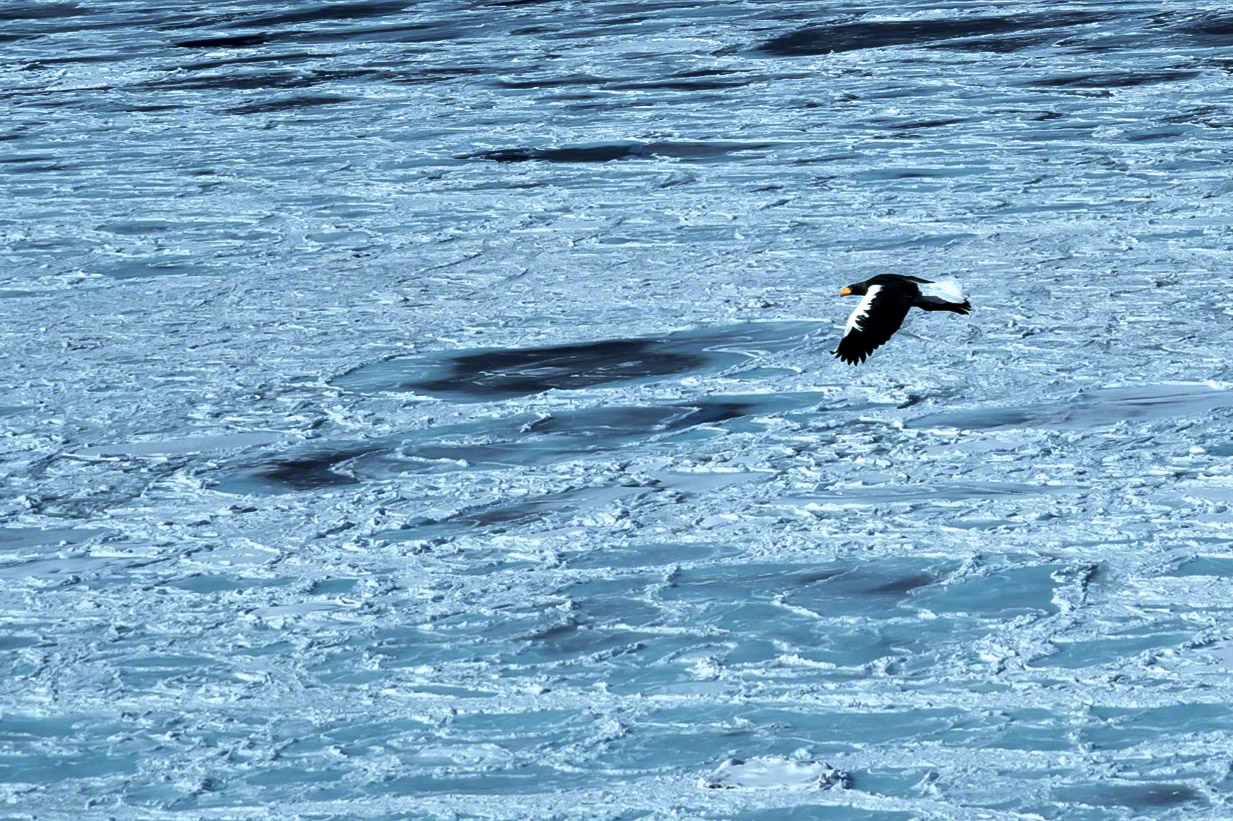
A Steller’s sea eagle flies above drift ice. In winter, half of this eagle’s global population gathers in Hokkaidō. (© Mizukoshi Takeshi)
(Originally published in Japanese. Text and photos by Mizukoshi Takeshi. Banner photo: Pacific saury washed up on the shore of Lake Utoro disappeared overnight, taken away by the waves, an unbelievable natural marine phenomenon. © Mizukoshi Takeshi.)
